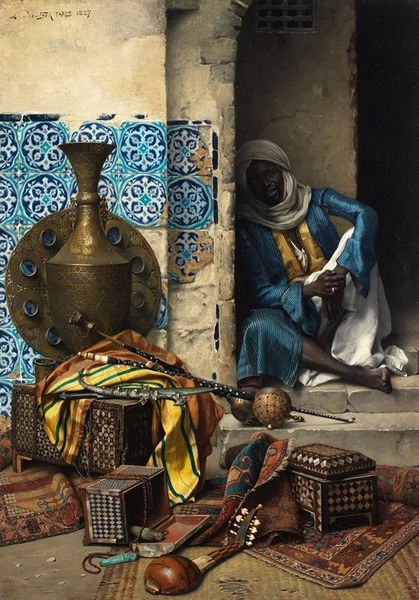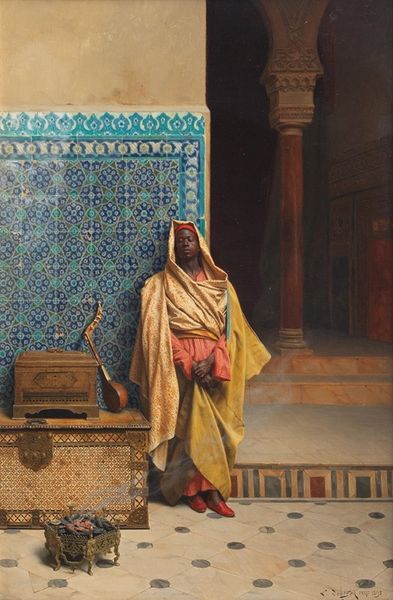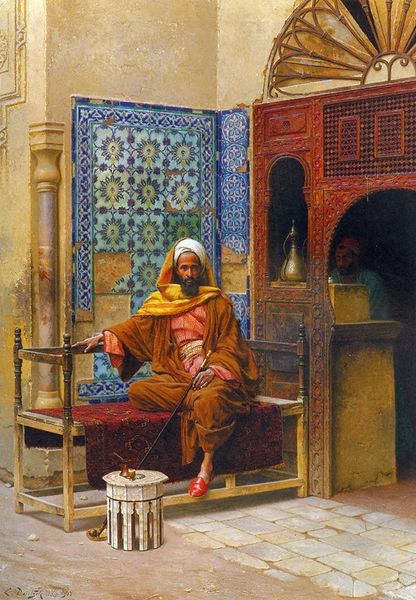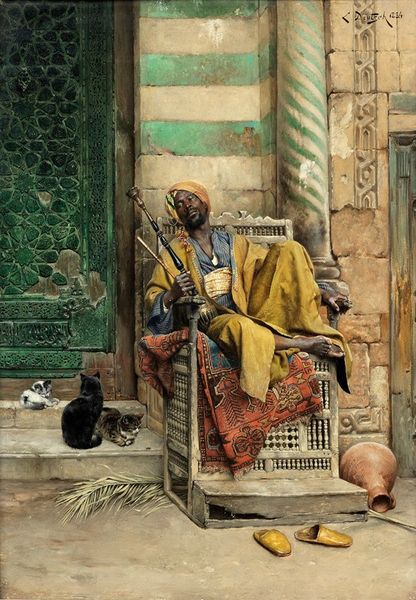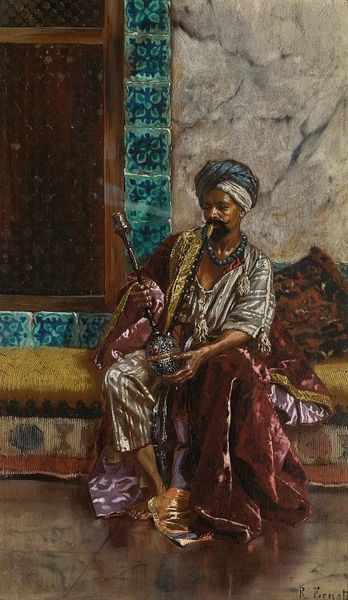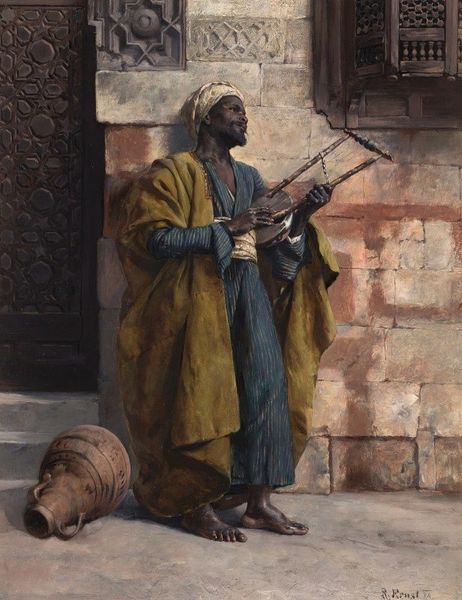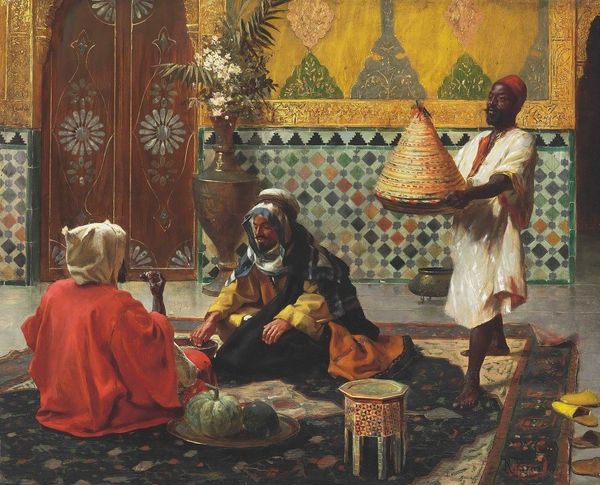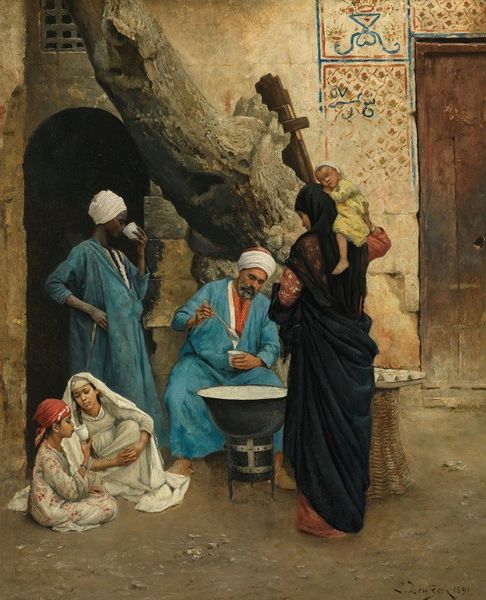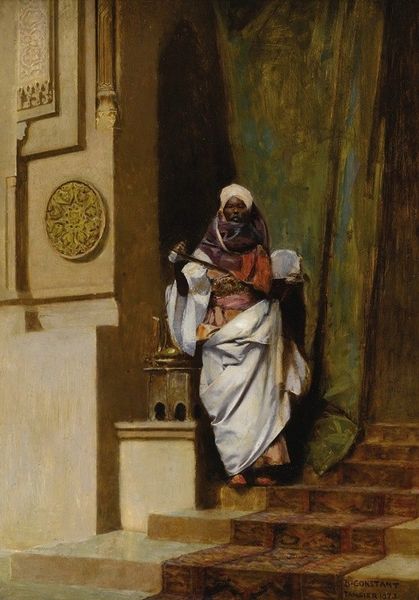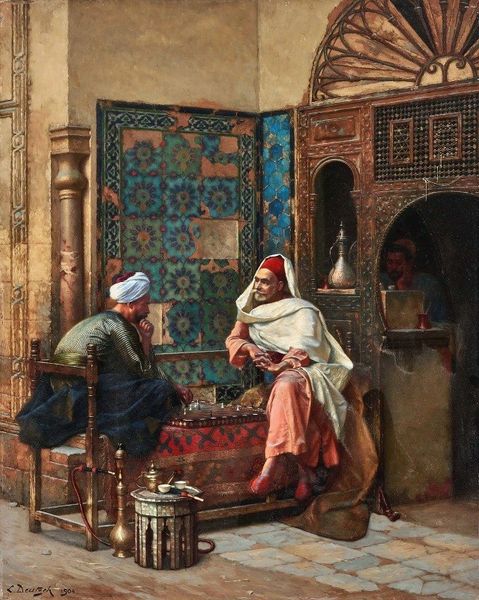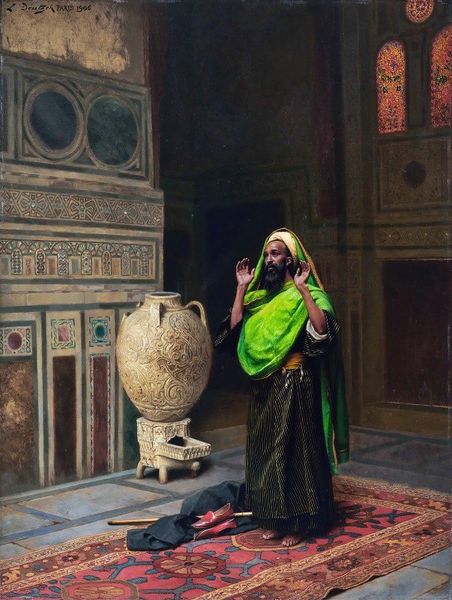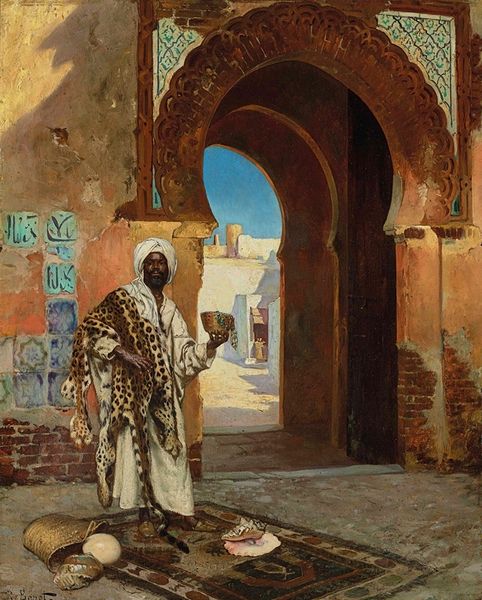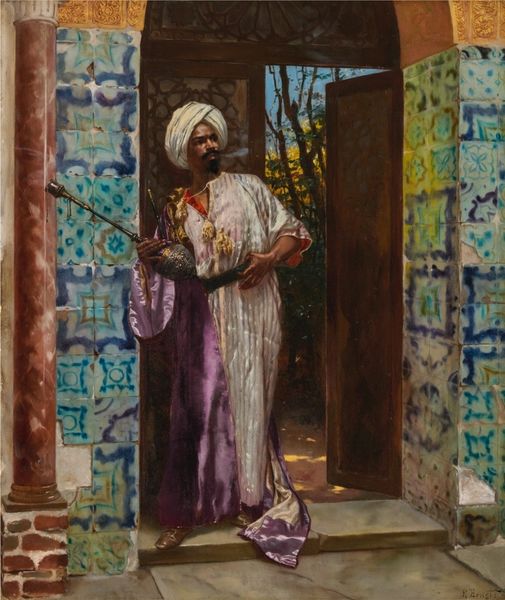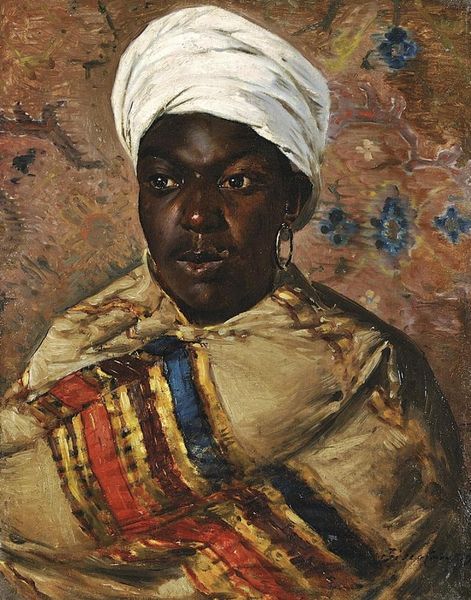
painting, oil-paint
#
figurative
#
painting
#
oil-paint
#
painted
#
oil painting
#
underpainting
#
orientalism
#
history-painting
#
academic-art
#
realism
Copyright: Public Domain: Artvee
Curator: This is "Le Barde Noir," or "The Black Bard," by Jean-Léon Gérôme, an oil painting reflecting the Orientalist style he was known for. Editor: It's instantly striking—a powerful figure amidst intricately patterned blues. The stillness is palpable. A mood of quiet contemplation hangs in the air. Curator: Indeed. Gérôme, deeply influenced by his travels to North Africa and the Middle East, often depicted scenes from these regions. This piece provides a glimpse into a specific cultural moment, likely inspired by his encounters with musicians or storytellers in those areas. Editor: The composition is quite interesting. Note how the bard is centrally positioned, almost mirroring the complex design on the tiled wall behind him. His dark skin and clothing are contrasted by the brightly colored tile, rug and slippers creating visual tension, while the muted tones of the instrument suggest age and experience. Curator: And consider the title, "Le Barde Noir." "Bard" carries a historical weight, associating this figure with a tradition of oral storytelling and cultural preservation, particularly within the context of societies impacted by colonialism. It is Gérôme placing this person and their traditions within a Western artistic framework. Editor: Semiotically, it all becomes very rich. The abandoned slippers suggest intimacy and repose; the rug speaks to both artistry and commerce; and the bard himself exudes authority and a sense of personal history. Each visual element acts like a signifier. Curator: Right, and it’s important to examine how such "realistic" depictions, typical of Academic art, contributed to constructing European perceptions of the "Orient," sometimes reinforcing stereotypes or exoticizing difference. Editor: That interplay of textures also gets me—the smooth coolness of the tile against the implied roughness of the rug...It almost begs to be touched, lending this scene to have a haptic quality. Curator: By understanding the artistic context of Gérôme's time, we can appreciate both his skill in rendering detail and critically examine the socio-political dimensions inherent in Orientalist art. Editor: The way Gérôme uses color to construct his narrative, while problematic, still demands careful attention. I see a depth and complexity that’s undeniably captivating.
Comments
No comments
Be the first to comment and join the conversation on the ultimate creative platform.
